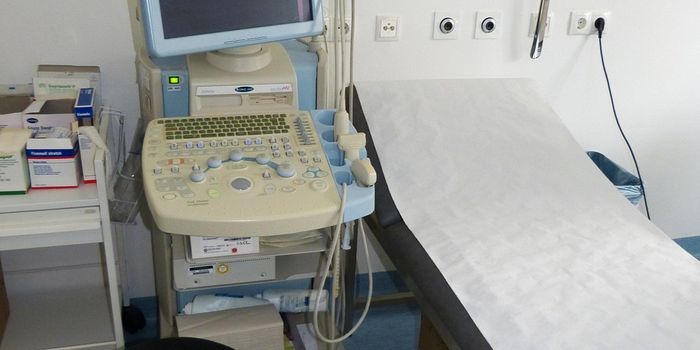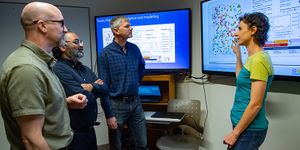Unraveling the Mystery of How Cells Unfold Proteins
Cells are always building new proteins and recycling old ones. Those proteins are often complex structures that are folded together in very intricate and complicated ways, sometimes forming large complexes. Researchers have now showed how Cdc48 - a so-called "Swiss army knife of cell biology" untangles these convoluted proteins to help regulate a variety of cellular functions. Reporting in Science, the investigators used cryogenic electron microscopy (cryo-EM) to reveal the vital structures of Cdc48 as they worked.
"Cdc48 is the swiss army knife of the cell and can interact with so many different substrates," said the senior author of the study Peter Shen, Ph.D., assistant professor in Biochemistry at University of Utah (U of U) Health. "Until now we didn't have an understanding exactly of how it works."
It's known that mutations in the gene that code for Cdc48 can cause human diseases, such as Charcot-Marie-Tooth disease type 2Y and amyotrophic lateral sclerosis (ALS). This work can provide new insights into those diseases and potentially, how to treat them.
"Human Cdc48 is linked to multiple diseases and is the target of efforts to develop therapeutics for the treatment of cancers," said the co-corresponding study author Christopher Hill, DPhil., distinguished professor of Biochemistry at U of U Health. "The structure that we have determined can be used to advance efforts to develop more effective inhibitors and therapeutics."
"We set out to do this because we care how molecular machines work," added Shen. "We decided to hone-in on Cdc48 due to clinical relevance."
In this work, the scientists used yeast cells, a common molecular model, to purify Cdc48, then used cryo-EM to obtain images of the purified molecules in various conformations. The team showed how Cdc48 can thread a protein through a pore in the center of the complex, unfolding the protein as it moves through in a hand-over-hand fashion. With mass spectrometry, the collaborators at Brigham Young University found that Cdc48 was unfolding a protein called proteinan inactive protein phosphatase 1 complex.
"The cells are already doing the hard work for us by making these complexes," Shen said. "Because this method is so fast, we have captured Cdc48 in the act of unfolding a protein substrate."
Cdc48 is highly conserved, leading the researchers to hypothesize that it works in a similar way in humans. "We believe the structure we solved here will look very similar to what our bodies are expressing right now," explained Shen.
The entire complex has been difficult to see because Cdc48 interacts with multiple other molecules at nearly the same time. The multitasking is good for cells, but makes it hard to visualize the action. Shen wants to know how Cdc48 can bind to so many partners at once.
"The coolest part is this [work] demonstrates that we can take a protein directly out of host cells and image them in their native state," Shen said. "I think this is the future of the cryo-EM field."








